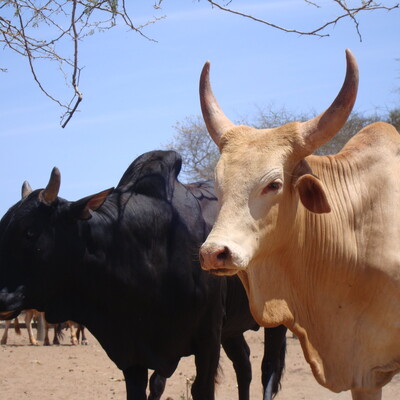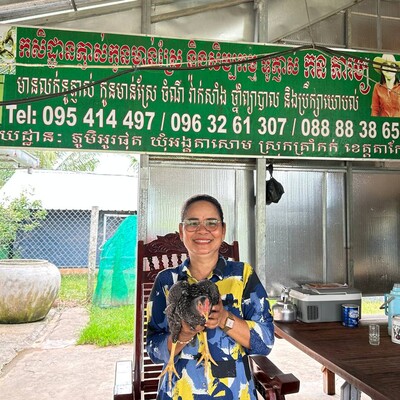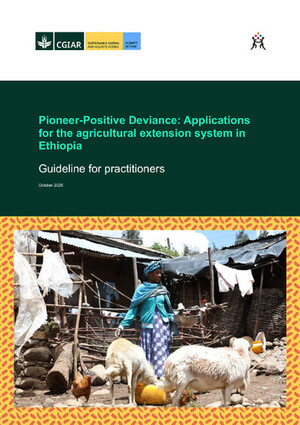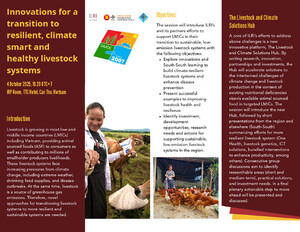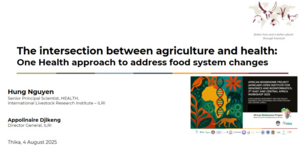
Inoculating legume plants with nitrogen-fixing rhizobia bacteria improves yields in Ethiopia and could save USD28 million annually in fertilizer costs

A legume farming demonstration plot by the N2Africa project in Pawe, Benshangul Gumuz, Ethiopia (photo credit: ILRI/Apollo Habtamu).
A five-year project that promoted nitrogen fixation through the use of rhizobia bacteria in grain legumes in Ethiopia has helped participating smallholder farmers increase their legume production by 20% and could help the country save over USD28 million annually in fertilizer costs.
The N2africa project, a large-scale agricultural research project that worked in 11 African countries, put nitrogen fixation to work for smallholders by using strains of root nodule bacteria known as rhizobia in grain legumes. The grain legumes are particularly useful in small-scale low-input systems of agriculture because they take inert nitrogen from the air and, through symbiosis with the bacteria, transform it into proteins in a process that leaves no carbon footprint in the atmosphere. The legumes also provide an important source of protein in the human diet.
Working in 31 woredas (administrative divisions) in the Amhara; Oromia; Southern Nations, Nationalities and Peoples’; and Benishangul Gumuz regions of Ethiopia since 2014; the project has helped over 70,000 smallholder farmers not only take up farming of legumes such as common bean, faba bean, chickpea and soybean but also improve the fertility of their farms. Use of a technology to inoculate the legume plants with rhizobia has increased legume productivity, changed farmers’ attitudes towards legume cultivation and consumption, and brought about other agricultural benefits.
‘The average yield of legumes by N2Africa farmers increased by at least 20% compared to the baseline and non-participating farmers,’ says the N2Africa project coordinator, Endalkachew Wolde-Meskel. ‘This is equivalent to an increase in income of 13.5%, which represents a return on investment of USD3.5 for each dollar invested.’
Most of the project’s work was carried out through the national agricultural research system using public-private partners. The legume value chain involves more than 35 partners, including public institutions (national agricultural research institutions and the Bureau of Agriculture), private-sector partners (Gutes Agro, Alema Kudijts Feed Plc and an inoculant manufacturer), farmers’ cooperatives (Tsehay Union, Bore Baco, Sidama Elto and Mama Union) and non-governmental organizations (Menschen für Menschen and Catholic Relief Services).
‘While our collaborations with all the partners was important, the contributions of the national agricultural research institutions—Hawassa University, the Amhara Agricultural Research Institute, the Oromia Agricultural Research Institute and the Ethiopian Institute of Agricultural Research—to the project have been central to our success,’ Endalkachew says.
The project ended in June 2019, but many of these farmers will continue to enjoy significant increases in maize yields, for example, due to the residual soil fertility effects of nitrogen fixation after planting inoculated legumes such as soybean in their farms.
The N2Africa Ethiopia project was funded by the Bill & Melinda Gates Foundation through Wageningen University. It was implemented by the International Livestock Research Institute (ILRI).
Watch a four-minute video on the work of the N2Africa project in Ethiopia.
Watch a related news report on Ethiopia’s ETV television for more information (starts at 15:00 to 17:41 mins).
See related outputs from the project.
Visit the N2Africa wikispace http://n2africa-ethiopia.ilriwikis.org/Home and website www.n2africa.org








